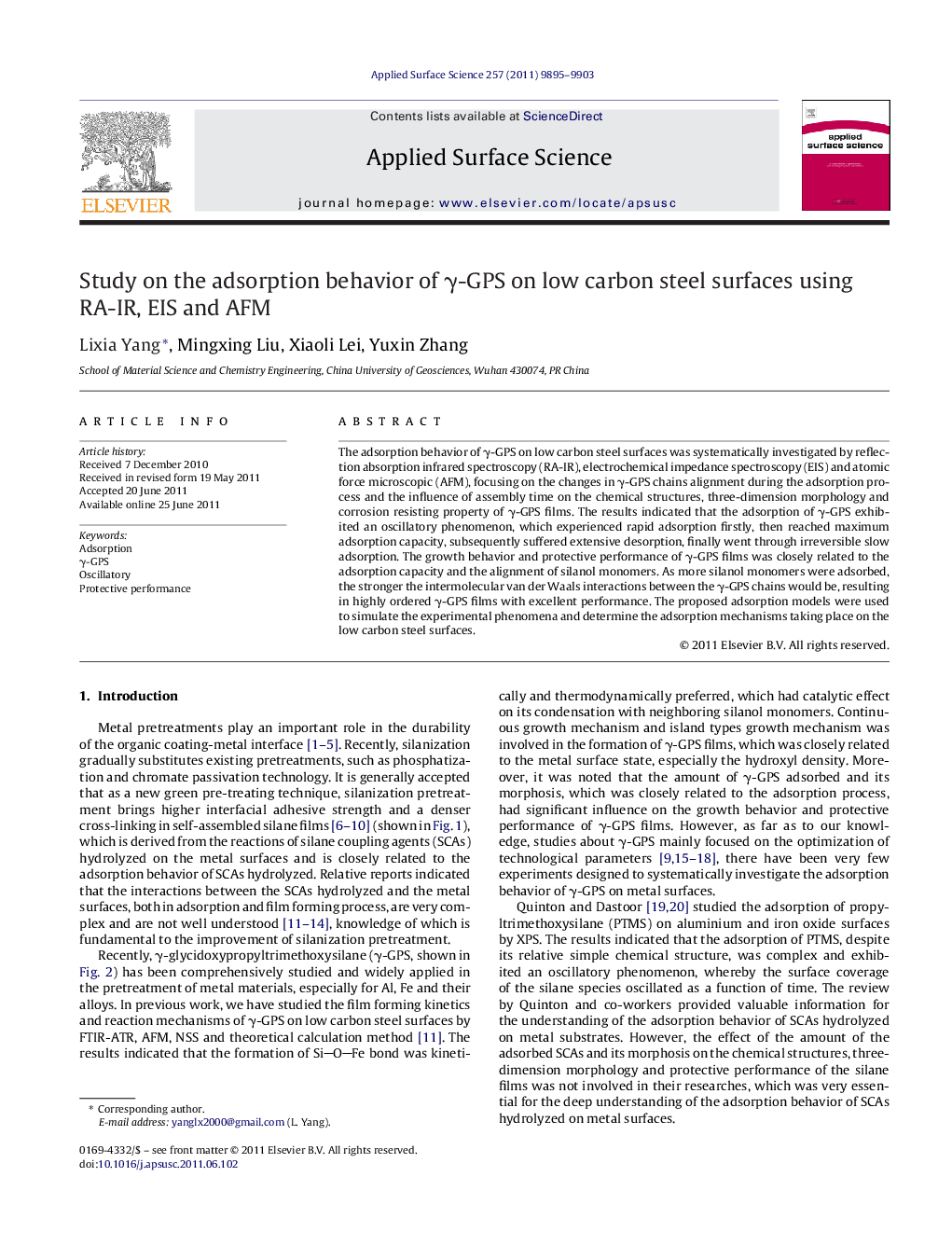| Article ID | Journal | Published Year | Pages | File Type |
|---|---|---|---|---|
| 5367365 | Applied Surface Science | 2011 | 9 Pages |
The adsorption behavior of γ-GPS on low carbon steel surfaces was systematically investigated by reflection absorption infrared spectroscopy (RA-IR), electrochemical impedance spectroscopy (EIS) and atomic force microscopic (AFM), focusing on the changes in γ-GPS chains alignment during the adsorption process and the influence of assembly time on the chemical structures, three-dimension morphology and corrosion resisting property of γ-GPS films. The results indicated that the adsorption of γ-GPS exhibited an oscillatory phenomenon, which experienced rapid adsorption firstly, then reached maximum adsorption capacity, subsequently suffered extensive desorption, finally went through irreversible slow adsorption. The growth behavior and protective performance of γ-GPS films was closely related to the adsorption capacity and the alignment of silanol monomers. As more silanol monomers were adsorbed, the stronger the intermolecular van der Waals interactions between the γ-GPS chains would be, resulting in highly ordered γ-GPS films with excellent performance. The proposed adsorption models were used to simulate the experimental phenomena and determine the adsorption mechanisms taking place on the low carbon steel surfaces.
⢠Adsorption of γ-GPS exhibited oscillatory phenomenon. ⢠Growth behavior of γ-GPS film was closely related to adsorption capacity of silanols. ⢠Strong interaction among silanols generated highly ordered and excellent γ-GPS film. ⢠Proposed adsorption models were used to simulate the observed experimental phenomena.
